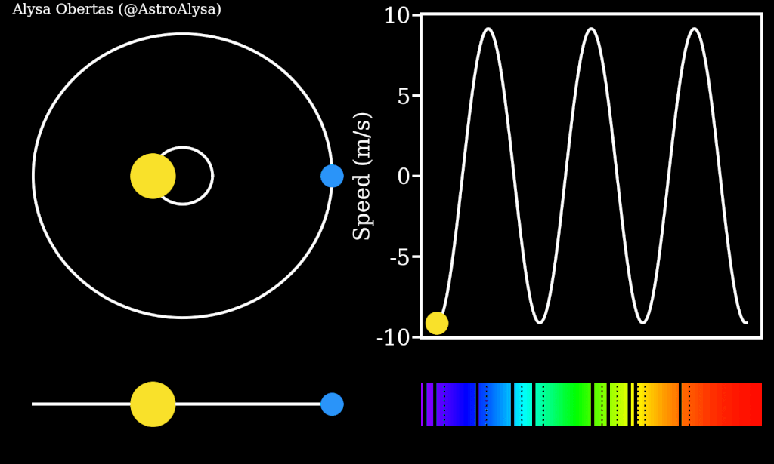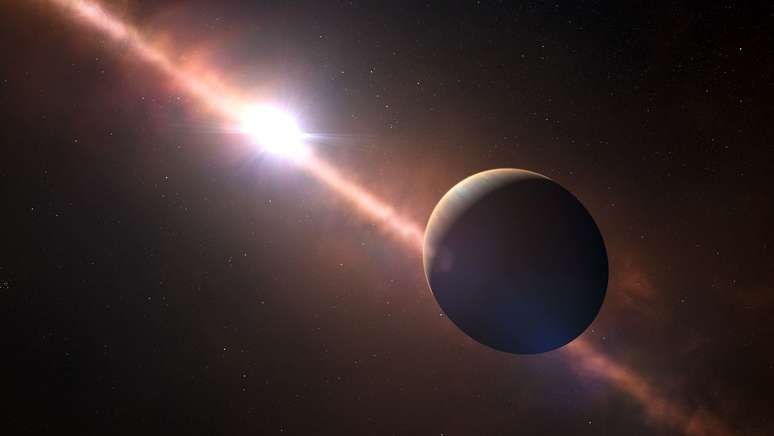Exoplanet detection techniques could be used to search for “planets” composed entirely of dark matter
If the planets are made of dark matter existed, could we detect them? The answer is yes, according to a new study showing a few ways to do it.
- Gas giant exoplanets could be orbiting the Sun’s “sister” star
- Planets can save themselves from hostile stars by hiding water in rocks
Invisible dark matter appears to be present in all galaxies of the universe, with a few rare exceptions (which, incidentally, confuse astronomers quite a bit). No one knows what it’s made of, but it’s possible to detect it through gravitational interaction with visible objects.
As the authors of the new study explain, there are speculations about what dark matter might look like if we could see it. The main ones can be summarized in two groups: isolated particles and macroscopic objects. In this second case it could appear in the form of “bubbles” of dark matter.
In this macroscopic state, dark matter can have large proportions, but also be similar in size to a planet. And if such a bubble exists around stars, just as a planet would, astronomers could find it with some of the same techniques used to detect extrasolar worlds.
The study used two of the methods to detect exoplanets (worlds orbiting stars other than the Sun), the planetary transit and radial velocity. The first consists in observing the light curve as the planet passes in front of its star, while the second observes the displacement of the star due to the gravitational influence of the planet in question.

If an exoplanet is found using one of these techniques, scientists can use spectroscopy — the spectrum of starlight passing through the planet’s atmosphere — to determine its atmospheric composition. Furthermore, when determining the size of the star and the orbit around it, it is relatively easy to measure its mass and density.
A high-density exoplanet means it is likely to be a rocky world (like Earth), while a low-density is found on gas planets (like Jupiter). A dark matter exoplanet, on the other hand, can have properties other than ordinary, such as much higher or lower densities than ordinary.
If an exoplanet candidate has the light spectrum that reveals unusual molecules in its “atmosphere,” or unexplained density, it could be that astronomers are “looking” at a bubble of dark matter. Furthermore, the authors calculated what the light curve would look like, which can become the basis for future more elaborate theoretical work.
There’s still a long way to go to expand this theory and model to apply to actual observations, but it’s an interesting step toward the quest to understand dark matter. One of the improvements is the use of simulations of planets with elliptical orbits, since only those with circular orbits have been considered in the calculations.
The article is available on arXiv.org and pending peer review.
Source: arXiv.org
Trending on Canaltech:
- WhatsApp bug gives update error and prevents the use of the messenger
- What does the perfect toothbrush look like? The USP study underlines the requirements
- Coffee consumption increases the premature ventricular beat and disturbs sleep
- ‘Oumuamua’s new explanation is the simplest of all, and may be right
- The situation | Meet the Brazilian road movie that will make you laugh
- Microsoft Teams has a revamped look and should be 2x faster
Source: Terra
Rose James is a Gossipify movie and series reviewer known for her in-depth analysis and unique perspective on the latest releases. With a background in film studies, she provides engaging and informative reviews, and keeps readers up to date with industry trends and emerging talents.






